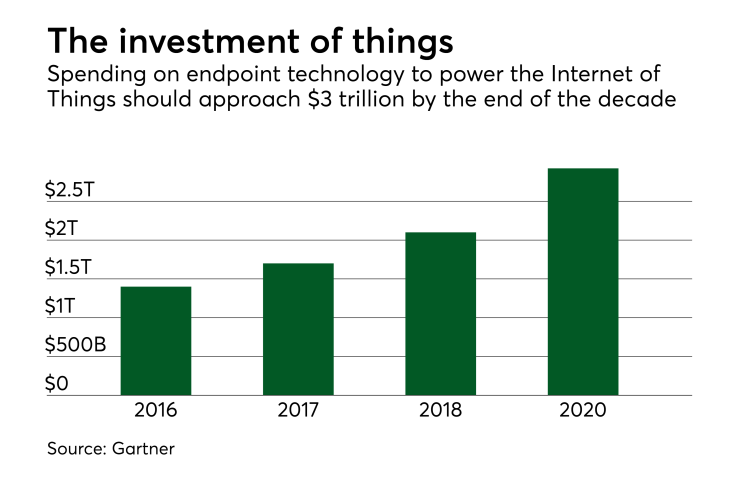The commercial potential of internet-connected devices appears bound only by imagination and comfort.
For security companies, there's a similar broad horizon as watches, refrigerators and other everyday items become tools for payments — not just in consumer households but also in areas of business.
"A couple areas have bubbled up in the health care and other financial services for protection," said John Yun, head of marketing for ZingBox, a Mountain View, Calif.-based Internet of Things security company.

ZingBox is anticipating further growth of internet-connected devices for commerce, and has drawn new investment to add development and markets for protecting IoT payments.
On Thursday it announced a $22 million Series B funding round, led by Dell Technologies Capital and Tri Ventures. Neither firm made an executive available for comment.
ZingBox's IoT Guardian establishes a "device personality" using machine learning. It feeds on information about the IoT-enabled object to establish a predictable usage profile, and spots signs that fall outside of that profile. As the company builds out new versions of its technology, it wants to enhance its sourcing, accumulation and analysis of information. "We’re looking to react much faster at scale while compiling more data," Yun said.
Guardian is designed to provide alerts for suspicious behavior and power instant remediation, as well as accommodate the unusual requirements of IoT devices, such as the limited onboard resources available.
"A lot of the security is powered by AI," Yun said. "That is the only way to cope with the fast-changing pace of the security landscape."
Much of ZingBox's work has been with health care providers. It plans to expand deeper into protecting payments for health care providers and general retail and to expand its footprint in Japan, the U.S. and beyond.
"Once you go beyond the confines of an office or a campus with these devices, the concept at a high level is that it's no different from a connectivity perspective than having Wi-Fi in the office," Yun said.
The large card networks have also updated their security to protect IoT deployments.
"This approach is absolutely where IoT security needs to go, as well as many other forms of security and fraud prevention for that matter," said Julie Conroy, a research director for Aite.
To prevent reams of false alarms as well as to effectively detect attacks, it's important to have a good understanding of normal behavior and anomalous deviations, Conroy said. "This is a great use case for the machine learning technologies that I'm increasingly seeing deployed in the cybersecurity ecosystem."





